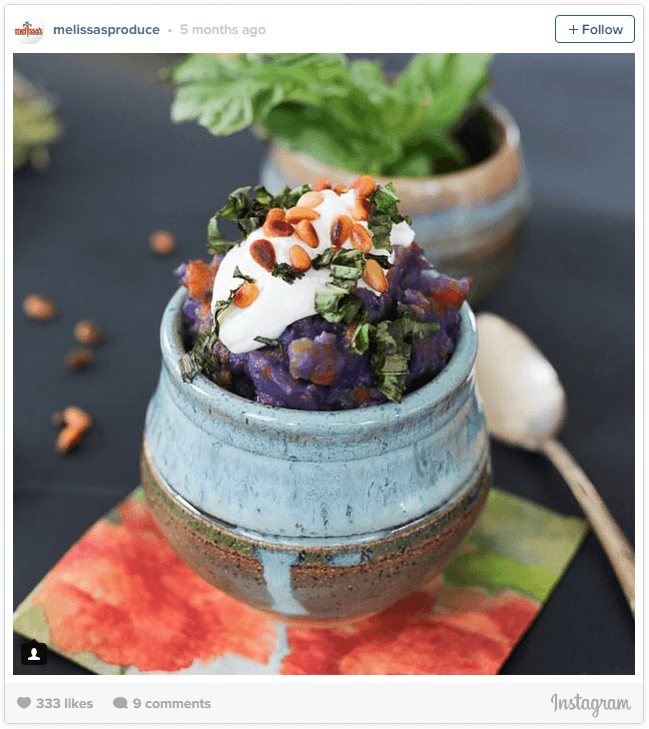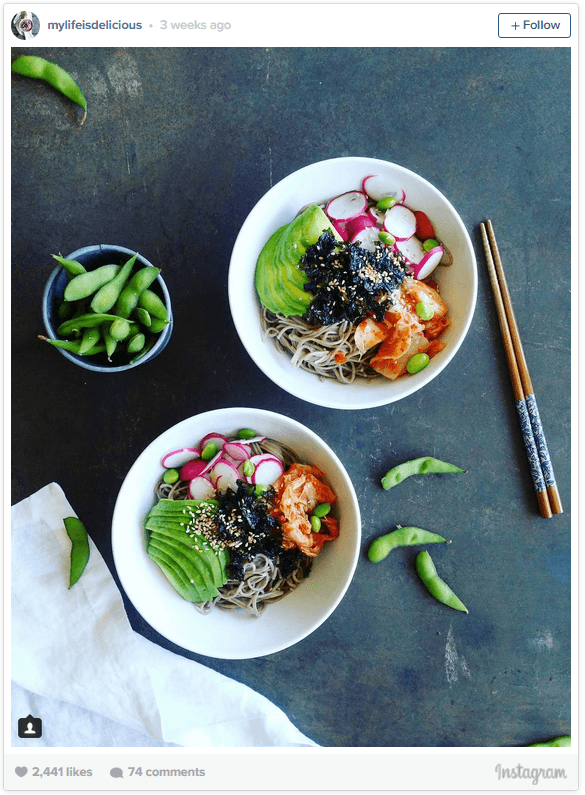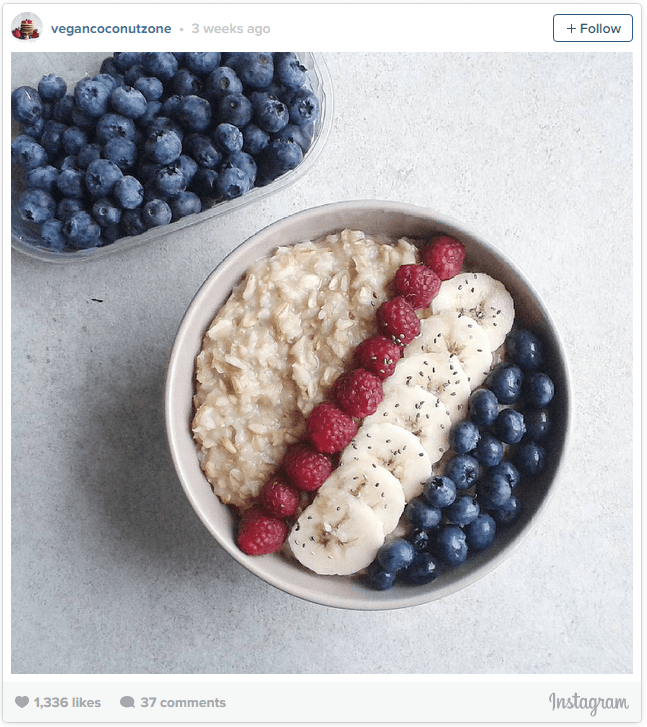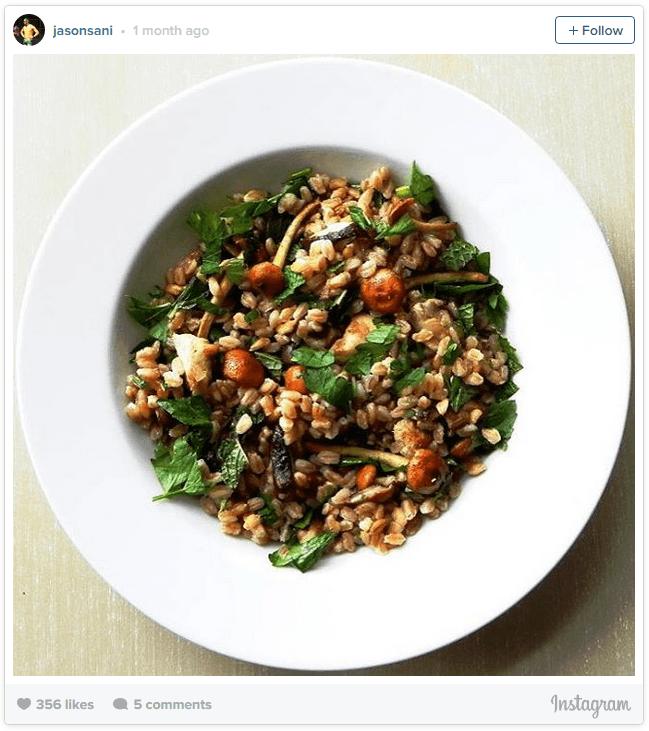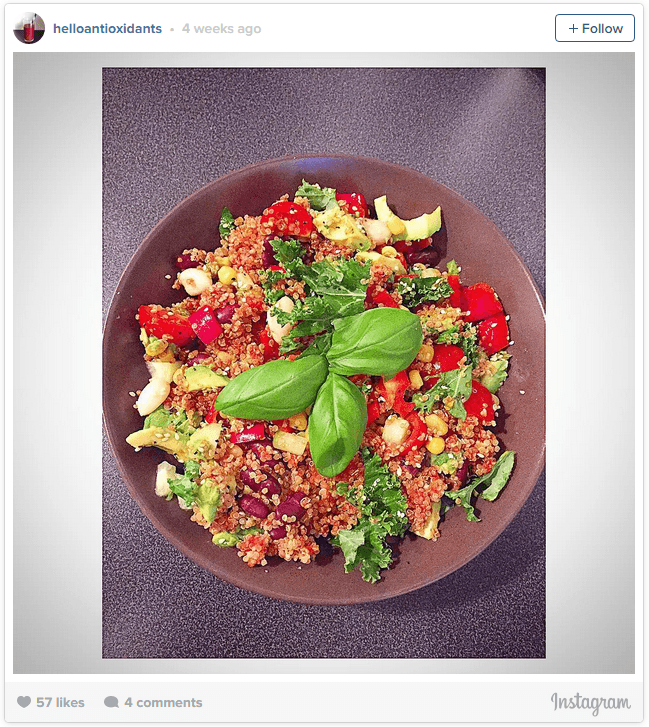As early as 1972, Robert J. Atkins’ food plan suggested limiting carbohydrates in favor of proteins and fats as a way to lose weight. More recently, the popular paleo trend has promoted the health benefits of returning to the diet of our hunter-gather ancestors. However, a new study from The Quarterly Review of Biology suggests that complex carbohydrates played a crucial role in the development of the human brain. The findings suggest that we have been too quick to slash carbs from our grocery lists.
In today’s gluten-free world, many nutrient-rich starches have disappeared from the carts of health-conscious shoppers. As a result, diets today are missing the vitamins, minerals, antioxidants, and nutritional values that cannot always be recuperated with artificial supplements.
Here is a list of six carbohydrates that deserve a spot in your weekly rotation:
1. Purple Potatoes: not your average spud
This more vibrant cousin to the white potato packs a serious punch of antioxidants. When steamed or boiled, they can protect against free radicals. Plus, studies have shown that the high levels of potassium found in purple potatoes can reduce blood pressure.
Dr. Joe Vinson from the University of Scranton hopes to bring them back into favor. “Mention ‘potato’ and people think ‘fattening, high carbs, empty calories.’ In reality, when prepared without frying and served without butter, margarine, or sour cream, one potato has only 110 calories and dozens of healthful phytochemicals and vitamins.”
2. It’s a seed, not a grain, it’s buckwheat!
This fruit seed is often mistaken for a grain since it is commonly used as a healthy, gluten-free substitute to flour. Popular uses of buckwheat include French galettes and soba noodles, both wholesome alternatives to wheat-based batters or pastas.
“Buckwheat is loaded with health benefits… it is a great source of heart-healthy fiber, which helps keep you full longer. It also provides hunger-satisfying protein without any of the cholesterol or saturated fat that animal protein contains. Plus, it offers eight essential amino acids, making this complete protein a smart nutritional choice for vegetarians,” says Elaine Gordon, a master-certified health education specialist.
3. The return of Quaker’s Oats
While often paired with rich ingredients like honey, brown sugar and cream, oats are an important addition to your diet given their content of soluble fiber. Beneficial side effects of increased oats intake, according to The Whole Grain Council, include lowering bad cholesterol, reducing the risk of Type 2 Diabetes and controlling blood pressure.
Most recently, oats have made a big comeback as a healthy breakfast that is simple to prepare and a wonderful alternative to sugary cereals.
4. Farro, it’s not just an ancient king in Egypt
A wonderful alternative to pasta, Farro is an ancient Etruscan grain that is chock-full of nutrients like vitamins B and E as well as fiber. A study from Harvard Medical School notes that vitamin E “acts as an antioxidant, neutralizing unstable molecules that can damage cells. Protects vitamin A and certain lipids from damage. Diets rich in vitamin E may help prevent Alzheimer’s disease.”
For a heartier meal, try adding farro to your regular soup or salad recipes. Or, create a healthy dessert by adding warmed fruit and honey to the cooked grain.
5. Change up your bean routine
Despite being a carbohydrate, kidney beans can actually help you lose weight given their high levels of soluble fiber. Beans and legumes are harder to digest which can suppress appetite. The iron content in kidney beans is a bonus too. Daniel Pendick, executive editor of Harvard Men’s Health writes, “one-quarter of the world’s population is anemic, meaning they don’t get enough iron to produce the red blood cells and oxygen-carrying hemoglobin needed to nourish their myriad cells.” A diet of iron-rich foods, however, is the best way to combat deficiency.
Get creative with kidney beans as you would with black beans. They can be used for more than chili and soups. Try adding an extra dose of iron and protein to salads or sauces.
6. Fill up on fiber with butternut squash
Butternut squash contains high levels of Vitamins A and C. Jessica Kovarick, a licensed and registered dietician says, “Beta carotene imparts the orange-yellow color of butternut squash. In the body, beta-carotene is converted to vitamin A, which helps maintain eye health. Vitamin A, a fat-soluble vitamin, also is important in maintaining healthy mucous membranes and other soft tissues, and it plays a role in promoting healthy skin.” Of course, if that is not enough, this healthy carb’s fiber content aids digestion and its high levels of potassium maintain heart health.
Butternut squash is delicious when simply roasted in olive oil and garnished with salt and pepper. If you are looking for a prepare-ahead meal, try making soup and stock your fridge or freezer for Fall and Winter meals.
The Verdict: Eradication is extreme
While it is not recommended to start reaching for white bread and plain pasta, there are benefits to adding nutrient-rich carbohydrates back into your shopping basket. Often, understanding the vitamins found in the groceries you buy can greatly improve your overall diet, health and happiness.
Whether you are gluten-free, paleo or in search of the next big trend, the message is clear: some carbohydrates are just too good to pass up.
Featured photo credit: Melissa’s Produce, mylifeisdelicious, vegancoconutzone, Jason Sani, helloantioxidants, Barley Swine via Instagram
Featured photo credit: Cutting Bread by dinner series via flickr.com

